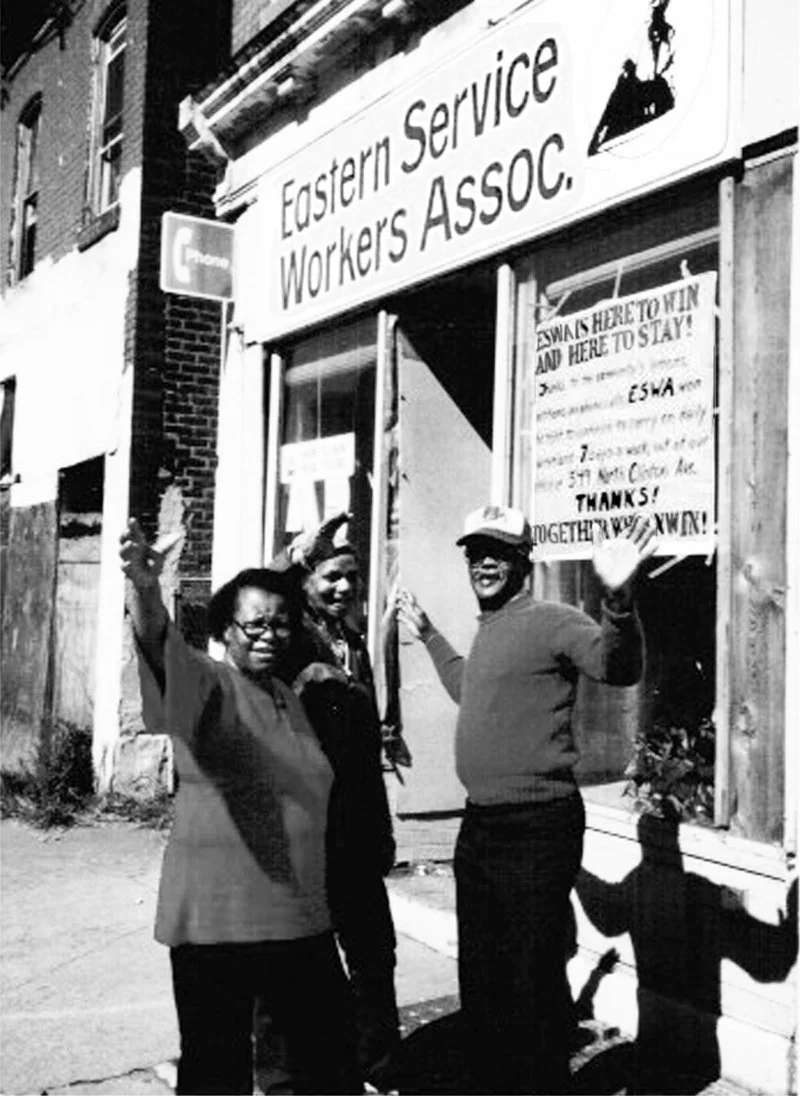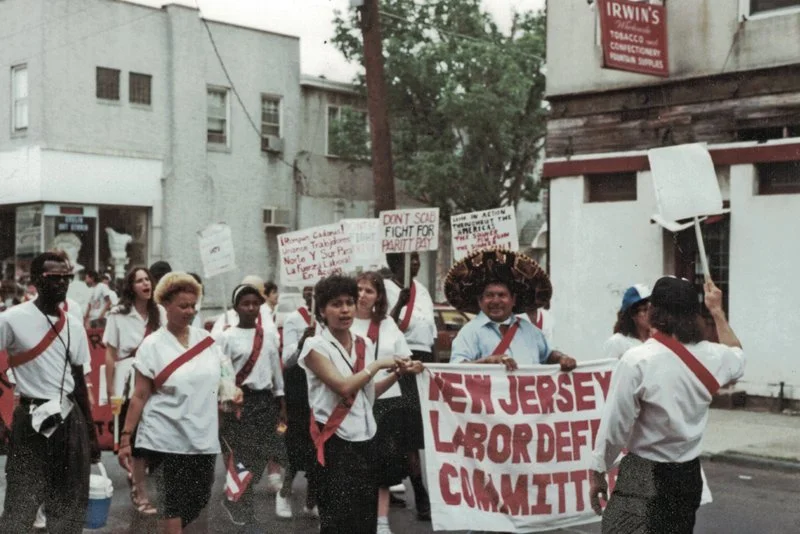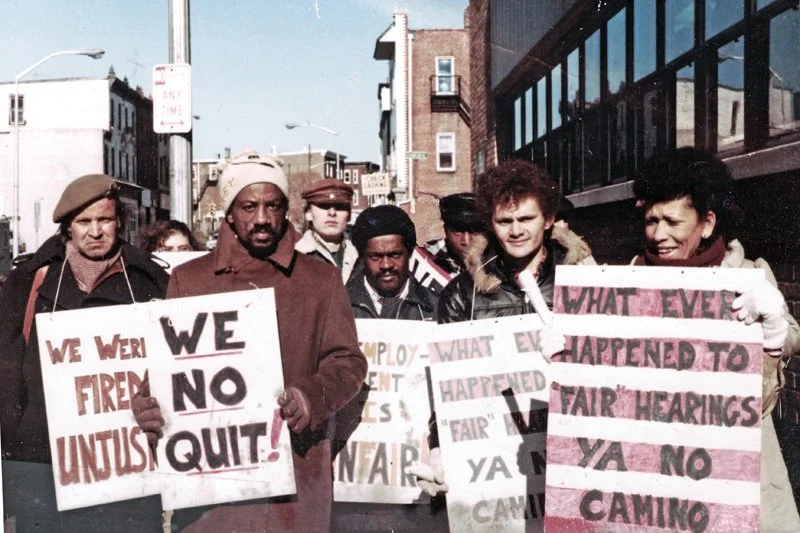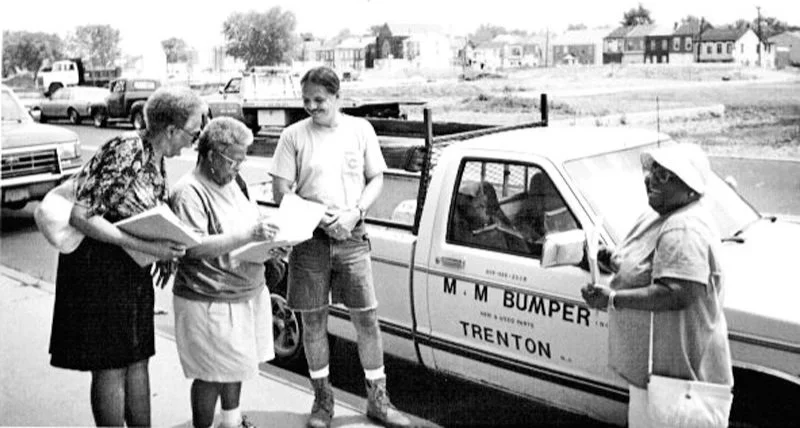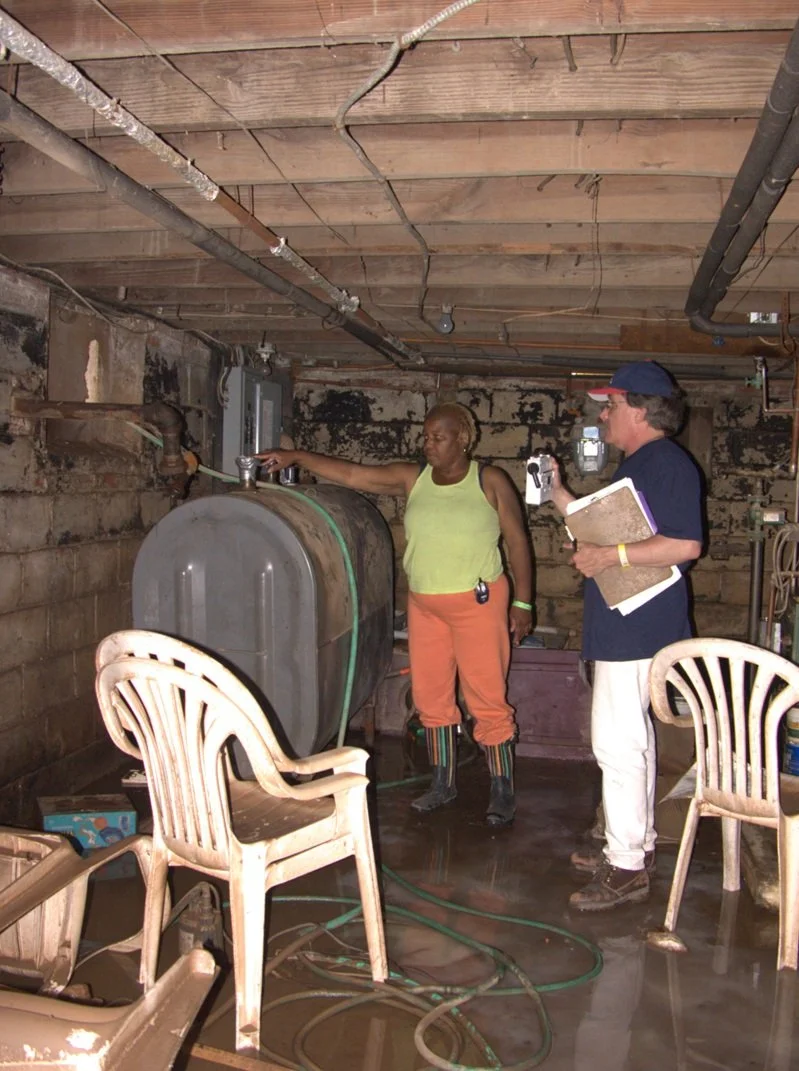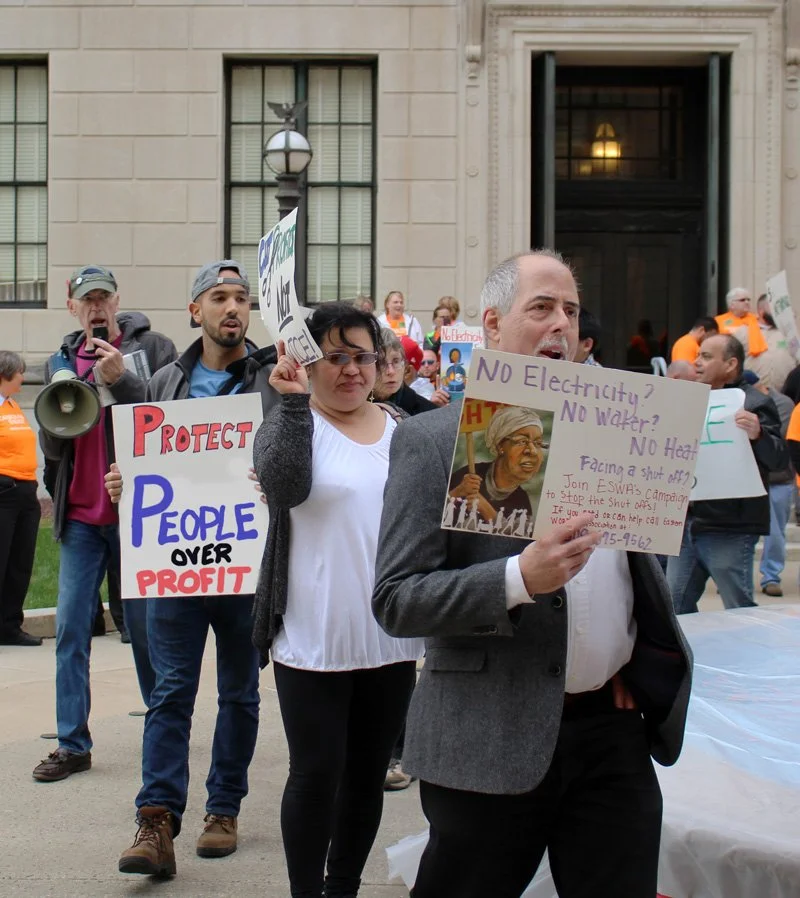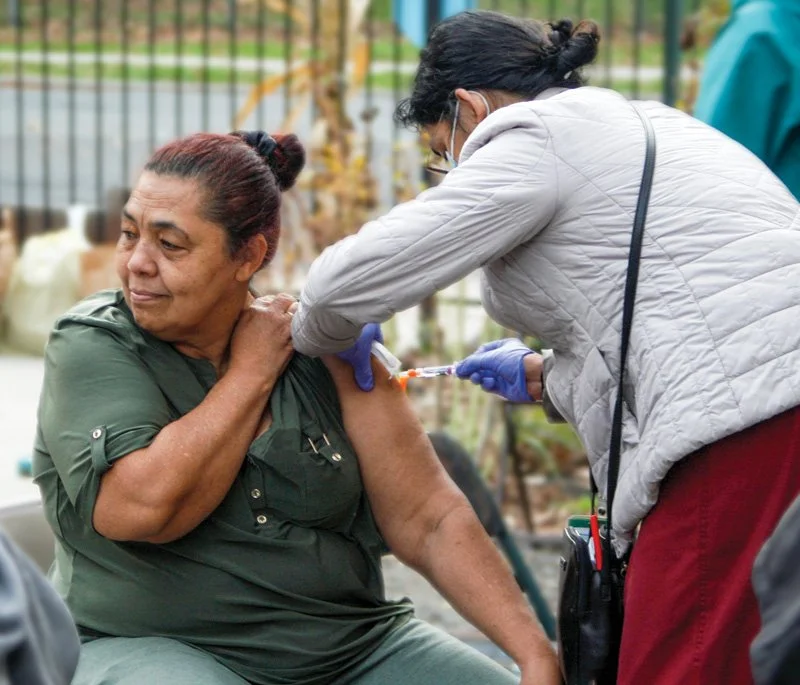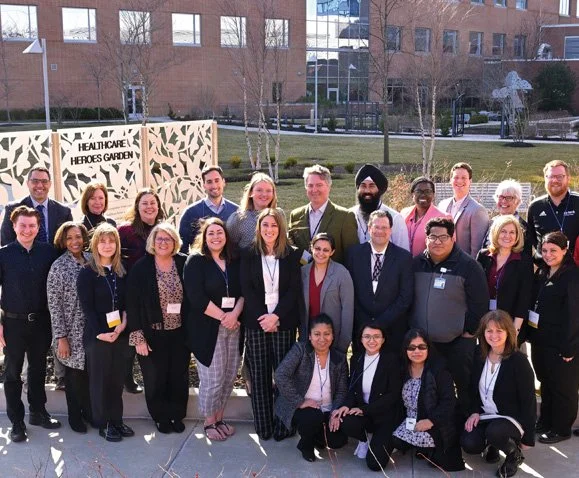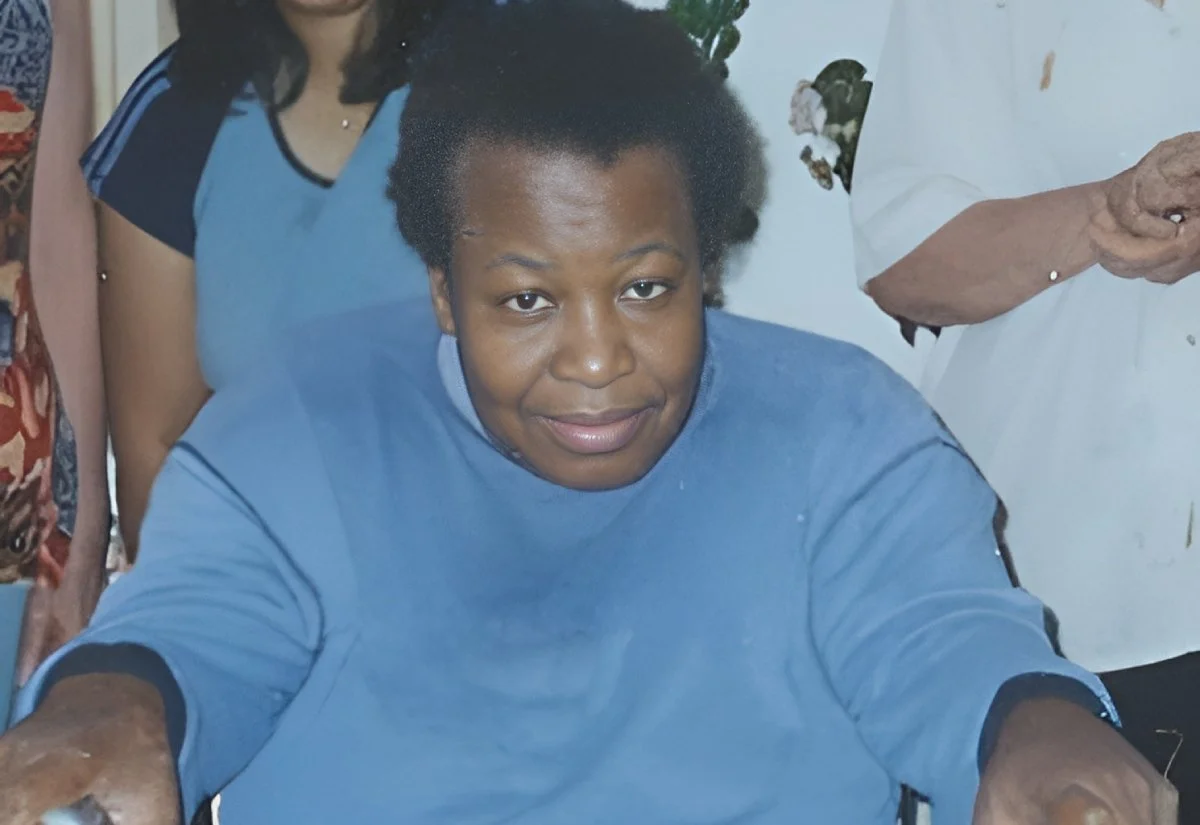
HISTORY
1980: Committee of Community Health and Safety supports union demands for occupational health concerns.
1900
Trenton: an Industrial and Manufacturing Hub
In the 1900s, thousands of industrial workers moved to Trenton to work in industries from metal cables used to construct the Brooklyn Bridge and the Golden Gate Bridge, as well as to work in one of the largest pottery industries in the U.S. Other industries included iron, steel, rubber and textiles.
1920
Workers Move to Trenton for Factory Jobs and Unions
By 1920 the population reached 120,000, up from 6,500 in 1850. The new residents were largely factory workers and their families. Unionized labor won higher wages and improved working conditions. Workers bought homes and cars and otherwise stimulated the economy.
1960
Deindustrialization and Outsourcing: Drivers of Poverty in Trenton
Post WW II, corporate management began looking for cheaper sources of labor, moving production jobs first to the non-union southern states and later to other countries to seek cheaper labor. Trenton’s workers suffered from lack of employment, lower wages and decaying infrastructure.
1970
Growth of Temporary and Service Work
Mirroring national trends, by the 1970s low-paying jobs were exploding in Trenton in the service sector. The remaining factories and warehouse distribution centers are now largely manned by leased labor crews, temporary workers and so-called trainees from dead-end government “workfare” programs. Trenton’s population reached its lowest point in 2010 with 85,000 people.
2000s
Abandoned Properties Spread in Trenton
Today, major institutions in Trenton have closed and been abandoned including: a Presbyterian cathedral, four libraries, two fully equipped hospitals, multiple police stations, grocery stores, banks and Trenton’s sole hotel with 197 rooms.
Our Story
Milestones in ESWA History
1976
ESWA Begins In Princeton
ESWA was established in Princeton in 1976 as a labor organization of a new type, run by and for low-income workers and completely independent of government funding. Our first office operated on a part-time basis in space provided by the Princeton Unitarian Church. Domestic workers living in the Witherspoon-Jackson neighborhood formed an integral part of the association. Other ESWA members worked as restaurant workers, nannies and gardeners commuting in and out of Trenton to Princeton and other wealthy communities nearby, often spending 80–90% of their incomes on housing, and suffering extreme poverty and shortened life-expectancies.
1977
Freda Smith Joins ESWA
Freda Smith, a domestic worker, lifelong Princeton resident and an activist from her high school days in the 1940s, signed up as an ESWA member and joined as a full-time volunteer organizer the following year.
1979
Establishment of Office in Trenton
Upon the decision by members and volunteer organizers of where the need was greatest, ESWA relocated its Office Central to Trenton at 549 N. Clinton Avenue in East Trenton, on the corner of South Olden Avenue. The area faced extreme poverty as the manufacturing plants that had served as the economic base of the area relocated overseas for cheaper labor, leaving tens of thousands of displaced workers competing for lower-paying, service-based employment.
1980
Temporary Worker Organizing
Delegates of the Central New Jersey Workers Benefit Council (WBC) helped members form a Temporary Workers Information Service (TWIS) and supported a series of picket lines organized by workers at a State of New Jersey office building in downtown Trenton to protest the temporary agencies taking fees of 50–75% from the worker’s earnings, as well as the lack of standing as employees, lack of enforcement of regulations by the State Attorney General’s office, and the blacklisting of any “temps” who demanded their rights on the job. This effort ultimately aided temporary workers in seeking legal recourse.
1980s
Battling for Public Health
With the deterioration of housing and loss of tax base for basic municipal sanitation service, Trenton was overrun with rat infestations that harmed low-paid workers and their families the most. Outraged ESWA members brought concerns to the Workers Benefit Council, which formed a Committee for Community Health and Safety (CCHS) to enact solutions for serious public health and safety issues. CCHS hosted “Candidates Nights,” with ESWA members demanding that prospective mayoral candidates deal with the city’s rat infestation. CCHS ran an e-“RAT”-ication campaign including putting up posters all over town, volunteer community clean-up teams, free rat trap distributions and more.
1980s
1990s
Hispanic Solidarity
ESWA organized an annual Hispanic Solidarity Celebration (HSC), including marching and having a float in the Trenton Puerto Rican Day Parade, to call for solidarity between workers of North and South America.
1986
A Win for Iron Workers
After a battle of more than two years made possible through ESWA’s Organizer Training Programs and Benefit Program, ten ESWA members, unfairly fired by their employer at Modern Iron Works after asking for a wage increase, won $50,000 in back pay with the help of volunteer attorneys and advocates.
1999
ESWA Demands Economic Recovery
Victory! ESWA members organized small business owners, home owners and other concerned community residents through a Community Education Campaign to defeat a proposal by City of Trenton Planning Department to seize businesses and private homes by eminent domain for the N. Clinton Avenue area of East Trenton.
2006-
2012
Disaster Relief Units
ESWA mobilized an ad hoc Disaster Relief Unit in 2006 following flooding in The Island section of Trenton, demanding and gaining access to the area that was sealed off by government officials, to fill requests from members for emergency supplies and advocacy, and again following flooding in South Trenton after Hurricane Irene (2011) and Superstorm Sandy (2012). Volunteer organizers ran food drives to collect resources for distribution to affected ESWA members, school supply distributions and advocated with PSE&G customer service supervisors to restore power to neighborhoods where residents had been without electricity or heat for weeks.
2019
ESWA Wins Utility Relief for Thousands
WBC delegates and ESWA volunteers and supporters mobilized to multiple public hearings to demand the State end utility shutoffs, block additional rate hikes for the power companies and implement the Sustainable Development Goals, including Goal 7: “To ensure modern, sustainable energy for all.”
2020
COVID-19 Pandemic Response
ESWA mobilized a dynamic response to the COVID-19 pandemic that ravaged the health and wellbeing of service workers in New Jersey. ESWA immediately adopted necessary public health safety protocols and never closed its office for a single day during the pandemic, organized thousands of pounds of food through weekly distributions and deliveries to members in need, organized vaccine sessions and more.
2023
ESWA Invited to Regional Medical Conference
Central New Jersey Workers Benefit Council (WBC) delegates testified about the systemic barriers to accessing health care faced by themselves and other service workers at a regional conference convened by the American Hospital Association on inequality in health care.
Remembering Freda Smith
1927 — 2008
ESWA full-timer organizer and leader from 1977 until her passing in 2008
Freda Smith dedicated herself to the struggle of the oppressed and provided a shining example as she taught others how to turn adversity into victory for service, domestic and other low-paid workers. She was the founder of the Vivian Cooper Community Service Center and president of Eastern Service Workers Association (ESWA) Advisory Committee until her death in 2008 at the age of 81.
Freda was a lifetime resident of Princeton and a daughter of the working class; her mother was a domestic worker, her father a maintenance worker from a family of sharecroppers. At age 15, she joined her mother as a civil rights organizer, facing down government harassment, and in her later teenage years she played an instrumental role in fighting for the freedom of the Trenton Six, the six young African American men who were unjustly imprisoned on false accusations of murder.
Freda’s lifelong commitment to finding a permanent solution to injustice was just beginning, and she never made any secret of her strong convictions while making her living as a domestic worker and personal attendant care work for affluent New York and Princeton families. In 1978, she became a full-time volunteer with Eastern Service Workers Association. The following year she helped to spearhead the ESWA move into Trenton. Freda purchased a fire-damaged building at 6 West End Avenue for one dollar with the idea that it could become a service center for ESWA members. Freda rallied members of the Central New Jersey Workers Benefits Council, local small business people and churches to organize the volunteers and resources needed to rehabilitate the building. Under Freda’s leadership, the building housed a membership service center for almost two decades and subsequently became, and remains today, the association’s Office Central. One of Freda’s greatest pleasures was seeing the building she had first secured for the membership become a professional office space to better serve the association’s goals.
Freda was president of Mercer County Workers Benefits Council (WBC). In the 1980s, she took a leadership role in exposing the level of rat infestation in the city and in calling the city government to account for the problem, helped organize informational picket lines for Local 155 of the Oil, Chemical and Atomic Workers (OCAW) Union to bring attention to workers’ grievances regarding occupational health concerns at a local brake shoe factory; and led a WBC delegation to oppose the installation of Urban Enterprise Zones, a trickle-down scheme, in Trenton.
In the 1990s, when the city Department of Buildings lined a wrecking ball up in front of ESWA’s then Office Central on North Clinton Avenue, Freda, undaunted by the implicit threat of arrest when trying to stop the demolition, picked up the phone and dialed the then mayor of Trenton and demanded he stop the demolition crew. Under her leadership, the City ultimately agreed to repair the building.
During her later years, Freda organized an ESWA field office out of her apartment in Princeton, motoring food drives, clothing drives, back-to-school supply drives, and holiday turkey and toy drives. She coordinated work with dozens of area supporters, who dropped off clothing, food and other donations, part of which she distributed to ESWA members in Princeton and part of which other volunteers carried to Trenton for distribution to members there.
Freda’s list of contributions to the service worker struggle was tremendous. Her lifetime of dedication as a guiding force in the movement for change inspired hundreds of organizers and supporters across the area who benefited from the movement for which she helped lay a foundation for future fundamental change.



